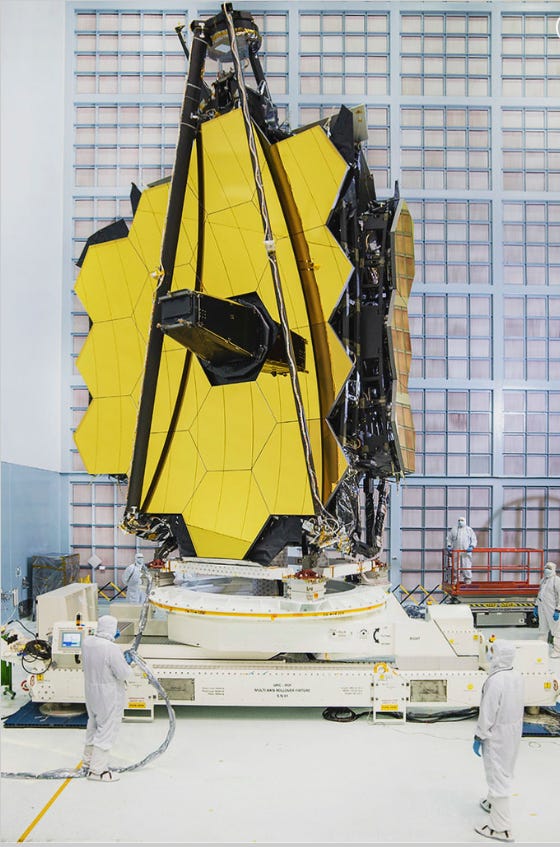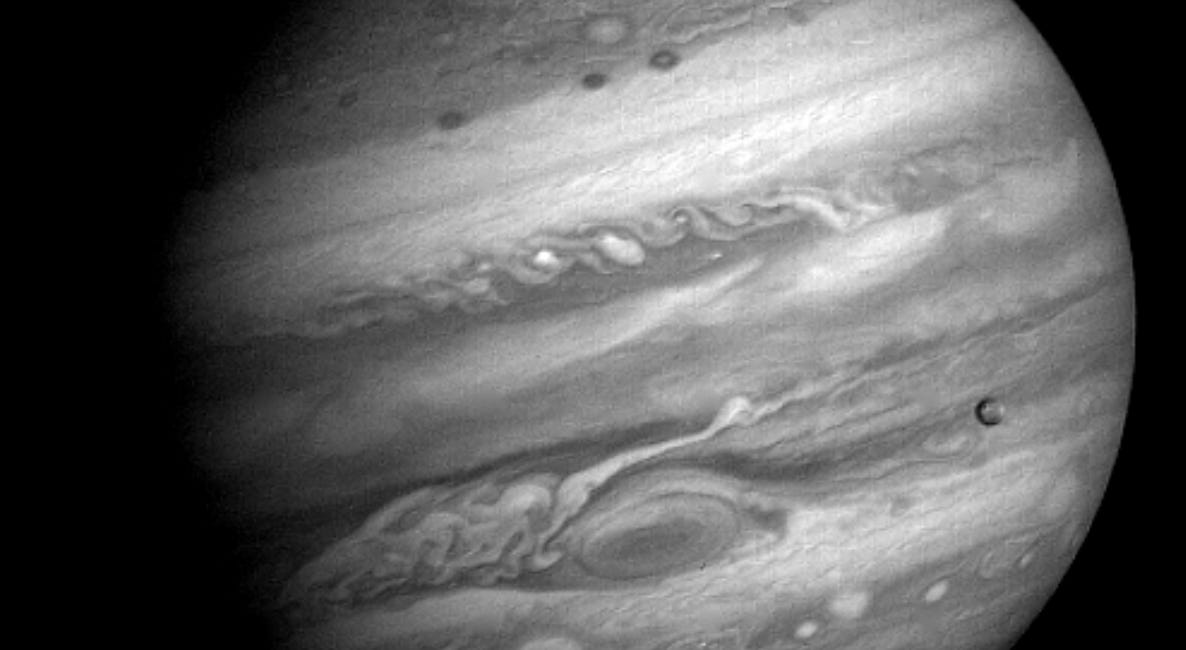In December 2013, the European Space agency launched its Gaia satellite, the “billion star surveyor.” Derived from the Greek, Gaia was a mythological figure, the ancestral mother of all life. The satellite’s primary mission is “precisely charting” the “positions, distances, movements, and changes in brightness” of various celestial bodies. Located at the second Lagrange Point (L2), Gaia is equipped with two optical telescopes and a variety of onboard software systems. Each day it sends about 25 gigabytes of data back to earth, an amount that could be higher but for recent damage it suffered.
The purple body represents the satellite. Image source: ESA.
At 1.5 million kilometers (932,057 miles) from earth, Gaia has no atmospheric protection from space debris like we do here down on the surface. In April of this year, the satellite suffered a collision with a piece of space dust estimated to be smaller than a single grain of sand. The problem was that this tiny object was moving faster than 32,186 km/h (20,000 mph).
At such speeds, the kinetic energy in a collision is extraordinary. For example, an object just 1 centimeter wide has the same capacity for damage as a 249 kg (550 pounds) object traveling 97 km/h (60 mph) on earth. An object 10 cm wide (3.9 inches) packs the same force as 7 kg (15.4 lbs.) of TNT. While Gaia is equipped with a protective cover, the speck hit it just right (or wrong), thereby damaging it. Because conducting a physical repair is quite obviously impossible, scientists have had to make adjustments to the software to alter its methods of measuring to accommodate the damage. So far, the satellite remains functional.
The James Webb telescope (JWST), NASA’s most ambitious of its kind to date, also suffered some issue with flying dust. In May of 2022, its mirror sustained a damaging impact. JWST’s mirror is huge, standing 6.5 meters (21 feet 4 inches) across. Although technically made up of hexagonal segments, when unfolded (as it is in space), the reflective surface presents as a a single plane. Like Gaia, JWST orbits at the L2, so incoming objects move very fast. The impact object in 2022 was slightly larger than what its designers had anticipated it might encounter.
JWST with only one side unfolded. Source: NASA/Chris Gunn
Nevertheless, JWST is a marvel of engineering. Ground crews can shift affected areas of the mirror to adjust for damage caused by an impact. This helps maintain the accuracy of its observational processes. In addition, they monitor potentially dangerous debris so that they can alter the flight path of the satellite to avoid collisions. Part of JWST’s mission, in fact, is to map out the trajectory of micrometeoroids to prevent future collisions. In the case of the 2022 impact, they simply could not see the object before it struck.
Both Gaia and JWST face risks beyond debris strikes. These include ultraviolet light and charged particles from the sun; belts of protons, electrons and ions; cosmic rays from deep space; and extreme temperatures to name a few. Engineers must prepare for and design against these hazards before a satellite ever leaves the ground.
The Height of Human Ingenuity
Gaia, JWST, and many other spacefaring objects represent the incredible capability of human scientists and engineers. A while back I reported on another remarkable achievement. Technicians on the ground managed to reconnect with Voyager 1, a probe sent to the heavens in the 1970s! They did so after it endured a failure of its flight data subsystem (FDS), probably caused by old age and repeated exposure to galactic elements.
Imagine solving an IT problem on a device located 15 billion miles away! Add to that that the device is older than most of you reading this, old enough that if it were a car it would be classified as a classic under motor vehicle law. Voyager was snapping photos of Jupiter when I was just learning to walk! Yet they fixed it and it continues to send data.
The accomplishments of aerospace engineers gives me hope that we can find workable solutions to our more earthly problems. If we can repair an object that is so far away that the number of miles is inconceivable to most people, certainly we can find ways to reorient society into a more sustainable one. NASA and ESA scientists achieve these milestones on shoestring budgets. The same must be possible here on earth as well. We just need to focus our energies on doing so, and on cultivating the will of more people to try.
I am a Certified Forensic Computer Examiner, Certified Crime Analyst, Certified Fraud Examiner, and Certified Financial Crimes Investigator with a Juris Doctor and a Master’s degree in history. I spent 10 years working in the New York State Division of Criminal Justice as Senior Analyst and Investigator. I was a firefighter before I joined law enforcement.







A couple days ago there was a meteor burst above New York City and New Jersey rocking houses and people heard explosions across fast distances. I do worry about what they call the hive coming by in 2032 that could have huge effects on earth and I wonder if it will start off before we ever get there and get worse and worse as we approach 2032. Space is a dangerous place